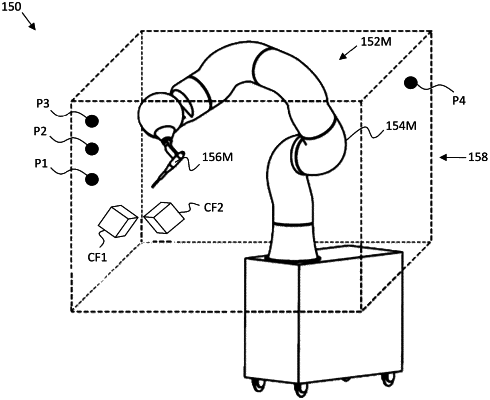| CPC A61B 34/10 (2016.02) [A61B 17/1626 (2013.01); A61B 17/1675 (2013.01); A61B 34/25 (2016.02); A61B 34/74 (2016.02); A61B 34/76 (2016.02); G16H 20/40 (2018.01); G16H 40/63 (2018.01); G16H 50/50 (2018.01); A61B 2017/1602 (2013.01); A61B 2034/104 (2016.02); A61B 2034/105 (2016.02); A61B 2034/107 (2016.02); A61B 2034/741 (2016.02)] | 19 Claims |

|
1. A method for determining a location for one or more bones in a workspace of a robot comprising an end-effector, the method executed on a computing system comprising one or more processors and executing software comprising a kinematic model of the robot and a cut-file, the method comprising:
simulating robotic movements of a virtual end-effector during robot execution of the cut-file at a first virtual bone location within a virtual workspace of the robot;
simulating robotic movements of the virtual end-effector during robot execution of the cut-file for at least a second virtual bone location within the virtual workspace of the robot,
simulating robotic movements of the virtual end-effector during robot execution of a second cut-file for a third virtual bone location within the workspace of the robot;
simulating robotic movements of the virtual end-effector during robot execution of the second cut-file for at least a fourth virtual bone location within the workspace of the robot, wherein the movements are simulated with simulation software using the kinematic model of the robot;
determining, for each virtual bone location, if the simulated robotic movements of the virtual end-effector during robot execution of the cut-file or the second cut-file meets predetermined criteria;
identifying at least one optimal virtual bone location based on a comparison of the predetermined criteria that was met for one virtual bone location compared to at least one other virtual bone location; and
providing feedback in the operating room for positioning the one or more bones in the workspace of the robot at a location corresponding to at least one optimal virtual bone location.
|